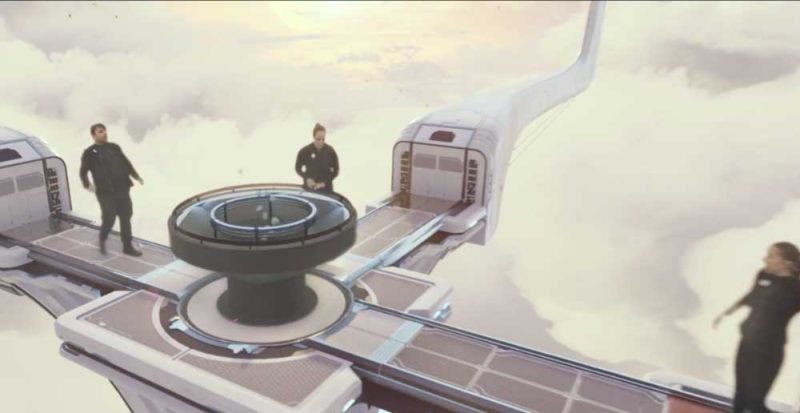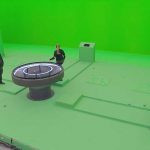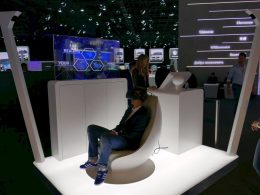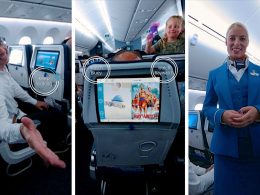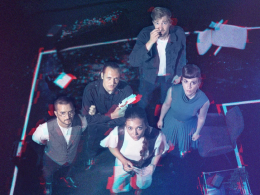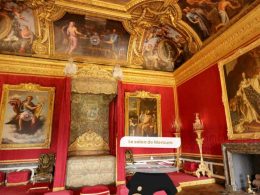The first season of a TV show called Lost in Time, which merges the real world with the digital world, is currently running in Norway. Viewers can take part in the competition and win from home using their smartphone and perhaps in the future also with VR glasses.
In "Lost in Time", a new Norwegian TV show, the participants visit a range of locations and times: from the era of the dinosaurs to the Wild West and the age of space travel. However, only the viewers at home can see this.
The competitors are in a TV studio lined with a green screen, in which only the most important props are real. The virtual environment is rendered using the Unreal Engine and inserted digitally.
"We show them just enough of the environment so that they can master the challenge," says Anders Kesin from The Future Group, which designed and realised the concept for the TV show together with FreemantleMedia.
"We don't use VR goggles for the participants because it's important to recognise the emotions of the competitors and how they react to the challenge," says Kesin. Solutions in which the Face behind the glasseswould solve the problem. But it's quite likely that the production costs would simply be far too high for a complete game in VR.
But they certainly didn't cut any corners: more than 150 employees from The Future Group are working on the TV show, coming from a wide range of fields such as game development, aerospace and design. And the end product seems to be really brilliant, as you can see in the clip:
https://www.youtube.com/watch?v=O-84piSTkyY&feature=youtu.be
Viewers can take part with smartphones
The producers describe the format as interactive because viewers can take part in the game using their smartphones. A mobile version of the challenges was developed specifically for this purpose.
While the competitors on TV fly through 1920s New York in a kind of flight simulator, viewers do the same on their smartphone screens. The viewers compete against the competitors on television. One of them can end up winning exactly the same prize money as the TV contestants.
Support for VR glasses under consideration
Kesin was inspired to create such a project when he was working on the Matrix trilogy at Warner Bros. "We were among the first to use gaming technology for film production," says Kesin. This inspired him to create a TV entertainment format that renders digital graphics in real time.
Why smartphones and not virtual reality
"We know that around 80 per cent of all people who watch TV programmes have a smartphone. But very few people own VR glasses. We want to reach as many people as possible," says Kesin. An iconic TV show like this could, I would argue, give the goggles another huge boost.
The producer can imagine that viewers will also be able to play along with the VR glasses in the future and get directly involved in the competition. For example, in a virtual Formula 1 race.
Mixed reality for e-sports broadcasts
Lost in Time is the group's first production. According to Kesin, many other countries have expressed interest in the television format, meaning that the show could expand globally.
Co-operations with e-sports leagues are also planned. "They are currently testing our platform. Because we combine television and gaming technology, it is possible to bring real people into the games." Kesin describes an e-sports scenario in which a presenter does not commentate on the game from outside, but reports directly from the pitch.
This type of TV show would be easy to realise in the context of virtual reality, especially as the corresponding mixed reality technology has long been available for HTC Vive and more recently also for Oculus Rift.
Source: Vrodo / Youtube





